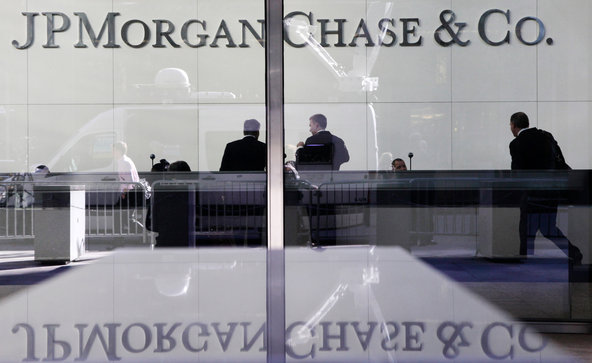The austerity debate misses half the point. It is true that governments, especially those in the euro zone, should not chase an austerity spiral ever downward. But they cannot just sit on their hands. They must drive even harder for structural change.
The past few weeks have witnessed a sea change in the debate over fiscal austerity. A seminal academic paper by Carmen Reinhart and Kenneth Rogoff, which purported to show that economic growth was impaired if government debt levels exceeded the equivalent of 90 percent of gross domestic product, has been discredited.
Meanwhile, the European Commission has softened its line on the merits of further deep budget cuts in peripheral economies. Spain, for example, looks as if it will get until 2016 to get its deficit below the European Union’s magic number of the equivalent of 3 percent of G.D.P. Portugal, Greece, Italy and France are also being shown greater leniency by Brussels. One of the first things Enrico Letta, the Italian prime minister-designate, said last week was that his country needed to focus on growth, not austerity.
The change in attitude did not all happen in the past few weeks. The International Monetary Fund, which in the old days used to be considered the high priest of austerity, has been advocating looser policies for a good year. And as more countries have gotten sucked into the austerity spiral — slamming on the brakes, which crushes the economy, making it harder to hit budget targets — the folly of continuing with the same policies has been hard to ignore.
It is astonishing to think that it was only in December 2011 that virtually the entire European Union, including most countries outside the euro zone, signed up to the German-inspired “fiscal compact,” a misguided treaty that hard-wires austerity into governments’ constitutions. It will be interesting to see whether that has any residual role or, like the euro zone’s original growth and stability pact, is viewed as a piece of waste paper.
But there are dangers in the new consensus, too. The so-called austerians do have a point that excessive debt acts as a brake on an economy, even if there is no discontinuity at 90 percent of G.D.P. There is also the small matter of how rising debt — Italy’s is heading to the equivalent of 130 percent of G.D.P. and Spain’s to more than 100 percent — is going to be paid for.
At the moment, the markets do not seem worried. The European Central Bank’s pledge to do whatever it takes to preserve the euro is keeping governments’ borrowing costs down. One of the most dramatic examples of that is Portugal, whose 10-year bonds now yield 5.9 percent, down from 11.4 percent before the E.C.B.’s jawboning.
That said, the euro crisis was not caused by austerity but rather stemmed from the fact that many economies had become flabby and uncompetitive. Welfare states were too generous, labor had excessive privileges, civil services were bloated, swaths of industry were riddled with uncompetitive practices and judicial systems were sometimes dysfunctional, while tax evasion and corruption were often rife. What is more, in many countries, there has been an unhealthy nexus between banks and politics.
Those problems have been tackled, but only partly. Until they are more fully dealt with, the euro zone will not be able to return to sustained growth; unemployment, especially among the young, will stay unacceptably high; and the risk remains that the debt crisis will return.
Look at Italy. Mario Monti, the outgoing prime minister, did overhaul pensions. But he botched his overhaul of the labor market, making it harder for young people to get jobs. He also failed to do much to liberalize markets for services and did nothing to clean up politics. The best that can be hoped of Mr. Letta, who should not count on holding power for more than a few months, is that he will overhaul the electoral system.
Things are a bit better in Spain, whose labor liberalization seems to be working. But Madrid is still being too vague on what will be in its next batch of changes.
Meanwhile, Greece has been drinking bitter medicine for three years but has yet to crack its problem of rampant tax evasion. Nor is it clear that Antonis Samaras, the conservative prime minister, really wants to tackle vested interests in the business community.
Last but not least, France under François Hollande has taken only baby steps to restore its competitiveness. Public spending and taxes are too high, sucking vitality out of the private sector. Labor practices are too rigid.
More generally, across the euro zone, banks have resisted coming clean on their bad loans. National and European policy makers have often connived in that denial, partly because the banks are well connected and partly because doing so might require government-funded bailouts. But that is another drag on the economy.
Europe is overdependent on a broken bank system. It should be emulating the United States, which relies much more on capital markets to fund industry and households. But Brussels is deeply suspicious of markets. Indeed, its misconceived financial transaction tax will gum up the financial markets, which is exactly the opposite of what is needed.
Austerity and structural change are not the same. But they are often confused, because they both cause pain. With changes, the pain is mainly felt by well-entrenched vested interests. If the euro zone is going to have a healthy future, it must now tackle those with vigor — even as it goes easy on austerity.
Hugo Dixon is editor at large of Reuters News.
Article source: http://www.nytimes.com/2013/04/29/business/global/29iht-dixon29.html?partner=rss&emc=rss
